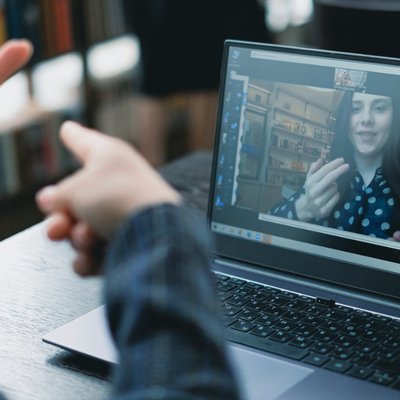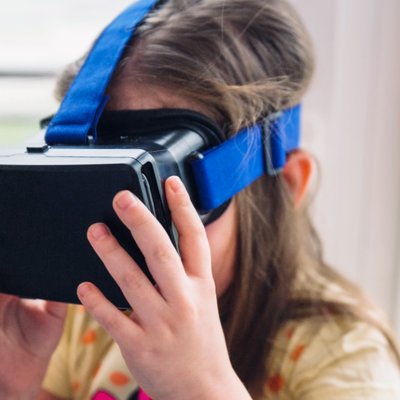U.S. Department of Education Prioritizes EdTech in the 2024 Plan
The U.S. Department of Education's 2024 National Educational Technology Plan (NETP) represents a significant leap forward in educational innovation.
Oct. 29, 2024

As the new school year unfolds, educational leaders are adopting dynamic strategies to meet both longstanding and emerging challenges.
Schools are increasingly focused on practical skill-building, mental health, and real-world preparation to better equip students for a rapidly changing world. By expanding access to hands-on experiences, digital tools, and personalized learning, educators aim to ensure students graduate with the confidence and adaptability needed to succeed.
Schools are increasingly offering hands-on experiences through client-connected projects, internships, dual credit courses, entrepreneurial initiatives, and industry-recognized certifications. By focusing on skills that extend beyond traditional exams and rote memorization, students gain the confidence and practical knowledge essential for navigating a dynamic workforce. This focus on real-world learning shifts the emphasis from passive to active learning, where students apply classroom concepts to real situations, making the content meaningful and relevant.
The shift is also driving changes in assessment methods. Competency-based learning is replacing standard assessments in many schools, with an emphasis on evaluating students’ abilities to apply knowledge, solve problems, and collaborate in real-life contexts. By prioritizing competencies that align with workforce expectations - like teamwork, critical thinking, and problem-solving - schools are shaping well-rounded individuals prepared for the next steps in their careers.
Technology is more than just a supplementary tool in classrooms; it is a driving force behind innovative teaching methods and personalized learning. Schools are incorporating technologies like AI, data analytics, and digital platforms to provide tailored learning experiences that adapt to each student’s needs. Personalized learning paths allow students to progress at their own pace, mastering concepts fully before moving on, which fosters deeper comprehension and builds self-directed learning skills.

Many districts are also addressing the digital divide by ensuring access to necessary tools and connectivity, particularly in areas where students face socioeconomic challenges. With devices, software, and broadband access now available to students who may not have had them previously, schools are enabling equitable access to resources and narrowing gaps in educational opportunities.
To support effective use of these tools, schools are investing in teacher training focused on technology integration. Teachers are being trained not only in the technical use of digital tools but also in leveraging them to create dynamic, interactive lessons that enhance engagement and learning outcomes. By building a digitally literate workforce, districts can support students in developing practical tech skills that are increasingly critical in the workforce.
Mental health challenges remain a top priority in schools, with increasing resources being devoted to support students' social and emotional well-being. Schools are recognizing that mental health is foundational to learning and are incorporating strategies to help students navigate emotional challenges that can impact their academic performance and personal development.
With dedicated funding or community partnerships, many districts are hiring more counselors, social workers, and mental health specialists to address students’ needs. Schools are also implementing preventive programs, offering mental health resources, and creating safe spaces for students to discuss and manage their emotions. The goal is to create a supportive environment that helps students not only academically but also in building resilience and emotional intelligence, which are essential life skills.
Beyond the use of technology, educators are redefining how students learn by integrating digital methodologies with traditional learning approaches. Blended learning models, which combine in-person instruction with online components, provide students with flexibility while offering a structured environment that encourages interaction and collaborative learning.
Project-based learning is another method gaining traction, allowing students to explore topics deeply by engaging in real-world challenges that are relevant to their interests and future careers. Through these projects, students learn by doing, which can enhance their engagement and retention of knowledge. Educators are creating curricula that reflect this hands-on, explorative approach, embedding digital tools and industry-relevant projects directly into classroom experiences.

For these changes to succeed, schools are investing heavily in teacher training and professional development. As classrooms become more tech-driven, teachers need ongoing support to effectively integrate new tools and methodologies. Many districts offer professional learning programs, which include workshops, certifications, and resources on implementing digital tools, engaging students with interactive content, and managing blended classrooms.
Teacher well-being is equally important, as it directly impacts the learning environment. By fostering a supportive culture for educators—through mental health resources, workload management, and career development opportunities—districts are ensuring that teachers are well-equipped and motivated to bring their best to the classroom. A positive and balanced work environment helps retain quality teachers, which ultimately benefits students.
Collaboration is a powerful force in driving educational innovation. Schools are increasingly connecting with other districts, forming networks that encourage the exchange of best practices and foster collaborative problem-solving. By sharing successes and lessons learned, educators can discover new solutions to common challenges, from personalized learning to digital access.
Many schools are also fostering collaboration within their own communities, encouraging students, parents, and local organizations to engage in the educational process. This approach not only supports student learning but also builds a sense of connection and shared purpose, creating a stronger, more resilient educational ecosystem.
As educational leaders prioritize real-world learning, digital integration, mental health, and community collaboration, they are paving the way for a more relevant, adaptable, and holistic approach to education. Through these innovations, schools are preparing students to face the future with confidence, equipped with the knowledge, skills, and resilience necessary for lifelong success.
By adjusting to the needs of today’s students and using tools and strategies that reflect the demands of a rapidly evolving world, educational institutions are redefining the role of schools in society, aiming to inspire students and set them on a path of continual growth and opportunity.